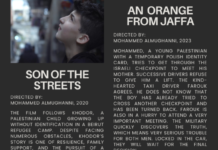Khuloud Rabah Sulaiman
Al-Jazeera / June 21, 2021
For many Palestinians, it is not the first time they have been forced to seek temporary shelter and the costly prospect of reconstruction.
Gaza City – Over the last 12 years, Gaza residents have endured four deadly Israeli attacks, rebuilding after each one and hoping that it would be the last.
But after the latest Israeli military assault on the besieged enclave, many Palestinians find themselves once again forced to reconstruct their shattered homes.
The 11-day Israeli onslaught in May destroyed 1,148 housing and commercial units and partially damaged 15,000 others, leaving more than 100,000 civilians displaced in United Nations-run schools and other hosting communities.
For many survivors, it was not the first time they have been forced to seek temporary shelter as they face the costly prospect of rebuilding.
Ramez al-Masri, 39, lost his two-storey house in a blink of an eye for the second time in May, leaving his family homeless again. His home was first blown up in the 2014 Israeli war on Gaza.
On May 14 at about 3am, one of Al-Masri’s neighbours received a phone call from the Israeli military ordering everyone in the vicinity to evacuate as air raids were imminent.
“At that late time, my neighbour phoned me just to tell me about the warning,” Al-Masri said. “Before evacuation, I rushed to my bedroom getting the bag that holds our [vital] belongings. Hysterically, we fled to a nearby hospital seeking safety. We stayed there until dawn.”
‘Totally destroyed’
Over the 11 days of deadly Israeli attacks, Al-Masri’s family later sheltered at one of his relative’s homes. After the ceasefire took effect on May 21, they returned to their house, but it was reduced to a debris-scattered hole filled with sewage because of the shattered pipes below.
“After I found my house totally destroyed. I rented an apartment for my family, including my wife and six children, with $200. It has only two bedrooms, one for me and my wife and the other for all my children,” he said.
Al-Masri’s house was previously knocked down in the 2014 war when Israeli forces invaded Gaza’s northernmost region, randomly shelling the area and leaving 140,000 homes destroyed.
The house was rebuilt after three years and his family moved back in 2017. “Will my house, which was destroyed once again, take another three years to be rebuilt? Shall I be homeless until 2024?”
Al-Masri said he fears returning to “the caravans”, small metal huts widely spread out in damaged areas, where he lived in the three years before his house was rebuilt. He cannot afford the expensive rent as a vegetable vendor on an income that can barely support his family in normal times.
“Living in the caravans in the summer is unbearable [because of the heat],” he said, adding he hopes the international community helps him and other homeless Palestinians rebuild as soon as possible.
Homeless for the fourth time
While the destruction of homes during the latest attack is painful for Palestinians, the human toll is even more so.
In May, at least 256 people, including 66 children and 40 women, were killed in Israeli air attacks and artillery fire. Nearly 2,000 others were wounded, including 600 children and 400 women, according to a UN report on the recent attacks on Gaza.
Living near the demarcation line with Israel has terrible consequences. Mithqal al-Sirsawy, 40, built his house on his land, 700 metres (2,300 feet) away from Israel. His house has been destroyed four times over the last 12 years, starting with the 2008 war.
“My house was targeted either by the Israeli tanks or their jets in all the wars – in 2008, 2012, 2014 and in the recent one, which occurred a few weeks ago,” he said. “How long shall I suffer this situation?”
Like every Israeli attack on Gaza, Al-Sirsawy had no other place to take shelter except UN-operated schools, despite them being unsuitable for living.
“Living in schools is intolerable because the classrooms are crowded with people. More than two families live in one classroom. And the most difficult thing is these schools lack access to clean water,” he said.
Al-Sirsawy needs nearly $50,000 to reconstruct his home – an impossible amount for a spice seller who earns about $300 a month.
“After every war, I got some assistance that was insufficient to be able to rebuild the house. The assistance equated only one-third of the amount I needed,” he said.
“My life has become a hell and my family has not felt safe in the house since the 2008 war,” he said. “When will the wars on Gaza stop so I can live in safety with my family in our house?”
“I think there’s no point to rebuild the house because everything we build here is being destroyed as long as the war continues.”
‘Walked over the dead’
Alaa Shamaly, a 36-year-old photojournalist, has a different story. His second home was destroyed in this war after he chose an apartment in what he thought was the safest place in Gaza.
Shamaly’s experience in the 2014 war led him to leave the al-Shujayea neighbourhood, considering it one of the most dangerous areas when Israel attacks Gaza because of its close proximity to the buffer zone.
“In one of the 50 days of the 2014 war, the Israeli jets and tanks heavily and randomly bombed our neighbourhood,” Shamaly recalled. “Under crazy bombing in every direction, my family and I went out from our homes, fleeing westwards.
“Many houses were destroyed over their inhabitants, and many others were murdered while trying to flee. We walked over the dead trying to survive.”
After that Israeli attack, Shamaly searched for a new place for his family, including his wife and five children.
They bought an apartment in the six-story Anas Bin Malek building in the heart of Gaza, expecting it would be one of the safest spots from further Israeli raids. But this proved untrue during the May attack.
“The Israeli occupation heavily attacked the centre of Gaza, destroying seven massive residential towers, leaving hundreds of families homeless, and committing the most brutal massacre in Al-Wehda Street, where over 40 people were murdered,” he said.
On May 16, the Anas Bin Malek building was razed to the ground, leaving Shamaly desperate after becoming homeless for the second time.
“What makes it most difficult for me is that I keep repaying the apartment instalments for the next two years,” he said, noting his bank automatically takes $200 each month out of his bank account.
After the destruction of his apartment, Shamaly now lives with his extended family back in al-Shujayea, facing an uncertain future.
“I won’t be able to buy a new apartment until the [loan] instalments are over,” he said.
Khuloud Rabah Sulaiman is a Gaza-based writer












